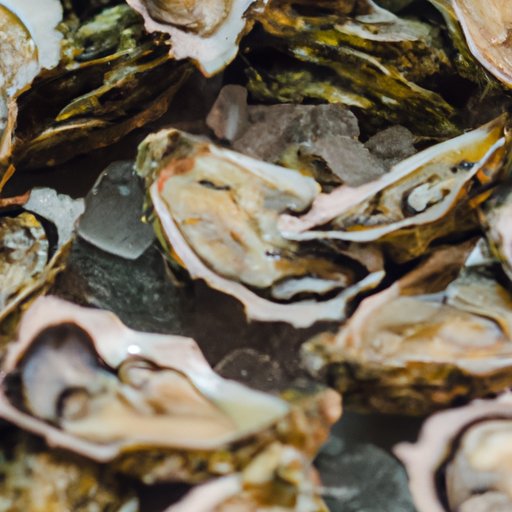
Introduction
For seafood lovers, there’s nothing more delicious than a plate of fresh oysters. But what happens when you can’t eat them all at once? Can you freeze oysters for later consumption? Freezing oysters is a great way to preserve their freshness and taste. However, there are some important things to keep in mind in order to ensure their quality is maintained. In this article, we’ll discuss the ins and outs of freezing oysters, from preparation to serving.
The Do’s and Don’ts of Freezing Oysters: A Comprehensive Guide
When it comes to freezing seafood, there are a few ground rules to follow. The same goes for oysters. The first thing to remember is that the fresher the oysters are, the better they will freeze. Therefore, always choose the freshest oysters you can find. It’s also important to handle them carefully and keep them at a proper temperature before freezing. Avoid freezing oysters that have been previously thawed, as this can lead to a texture loss and unpleasant taste. Furthermore, never refreeze thawed oysters, as it can lead to freezer burn and other unappetizing results.
Prolonging the Freshness of Oysters: Freezing Versus Refrigerating
Freezing and refrigerating are both effective methods for preserving the freshness of oysters. However, they have different pros and cons. Refrigerating is a great option if you plan on eating oysters in the next few days. It’s a simple process that doesn’t require much effort. However, refrigerated oysters can only last for a few days. On the other hand, freezing your oysters lets you extend their shelf life for up to six months.
The Surprising Benefits of Freezing Oysters for Later Consumption
Freezing oysters has many benefits. It enables you to have fresh oysters on hand at all times. This saves money, time and effort since you won’t have to visit the fish market regularly. Frozen oysters can also be used in a variety of recipes, making them a versatile ingredient to have in the kitchen.
How to Properly Store and Freeze Freshly Shucked Oysters
Preparing oysters for freezing is not a difficult task, but it requires some attention to detail. Once you have shucked your oysters, get rid of any debris and rinse them thoroughly. Check for any broken or damaged shells, and discard those. Place the oysters in an airtight container, cover them with their own liquid, and leave some space for expansion. Alternatively, you can vacuum-seal the oysters before freezing them. This method provides maximum protection against freezer burn.
The Impact of Freezing on Oyster Texture and Flavor: What You Need to Know
Freezing can affect the texture and flavor of oysters, but the good news is that there are ways to minimize these effects. When you defrost oysters, it’s always best to do so naturally in the refrigerator. This will keep the delicate flavor and texture intact. If you are eating oysters raw, you should only do so with fresh ones. Oysters that have been previously frozen are best cooked in soups, stews, or chowders.
From the Beach to the Freezer: A Step-by-Step Guide to Freezing Oysters
Here is a step-by-step guide to freezing your oysters:
- Shuck the oysters and examine them for any debris or damage
- Rinse the oysters under cold water and discard any with shells that don’t close when tapped
- Drain the clean oysters and pat them dry with a paper towel
- Place the oysters in an airtight container or vacuum-seal bag
- Cover the oysters with their natural juices and leave space for expansion
- Label the container with the date and type of oysters
- Place in the freezer and use within six months
Creative Ways to Enjoy Frozen Oysters: Recipes and Serving Suggestions
Frozen oysters shouldn’t be seen as a last resort option. In fact, there are many creative ways to use them in your meals, especially if you’re cooking for a large group of people. Raw frozen oysters are best when cooked in chowders or soups, but they can also be baked, fried, or grilled. You can also add them to salads, pasta dishes, or sandwiches for a delicious seafood twist.
Conclusion
Freezing oysters isn’t complicated. By following some best practices, you can easily extend the shelf life of your oysters. Freezing allows you to have fresh shellfish on hand anytime, without sacrificing quality or taste. Whether you’re cooking for a large gathering or simply want to enjoy fresher seafood at home, freezing oysters is a great option.




